Control arms in a car are vital parts of the front suspension. If a control arm is worn out or damaged beyond what a car manufacturer considers acceptable, the vehicle is deemed unsafe to drive.
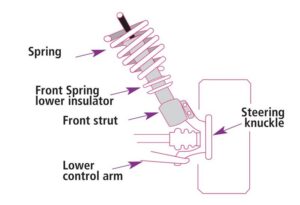
In recent years, the quality of front end parts, including control arms, has improved, but they can still fail. Even some modern electric cars have problems with control arms and other front end parts.
How a control arm works: In the front suspension design with Macpherson struts common in modern cars, there is one “lower” control arm on each side (see the illustration). The inner side of the arm is attached to the sub-frame or body via rubber bushings to dampen road noise and vibration. The bushings provide pivot points, allowing the control arm to swing up and down as the vehicle drives over bumps.
The outer end of the control arm connects through a ball joint to the steering knuckle, the part that carries the front wheel. A stabilizer (sway) bar connected to both lower control arms and struts keeps the car stable when turning.
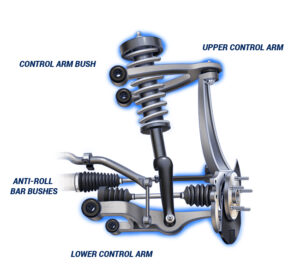
In a double-wishbone (“double A-arms”) layout (in the image), the steering knuckle is held by two, lower and upper control arm. A double wishbone layout is used in many pickup trucks, large SUVs, high-end vehicles and race cars. The upper control arm is smaller. The larger lower control arm carries most of the load. Both the lower and upper control arms have a ball joint, although the upper ball joint is often smaller. As the wheel drives over a bump, both arms swing up and down on rubber bushings following the wheel.
In either layout, control arms are very important components. If a control arm fails, the safety of the vehicle is compromised. There are several reasons why a control arm needs to be replaced. The most common reason is when a ball joint wears out, and it cannot be replaced separately. Often a ball joint comes with a control arm as one unit. A worn-out ball joint can pop out causing the vehicle to lose control while driving. This means that a vehicle with a worn-out ball joint is unsafe to drive. Unfortunately, symptoms of a worn-out ball joint are rarely noticeable. Your mechanic can check ball joints, control arms and other components during a regular service, but this can only be done when a car is lifted on the hoist.
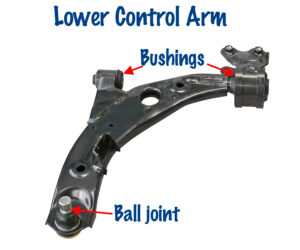
Worn-out or cracked control arm bushings are another reason to replace a control arm, although in many cars, the bushings can be replaced separately. See this photo of control arm bushings. Another reason to replace a control arm is when it has been damaged or bent after hitting a pothole or curb.
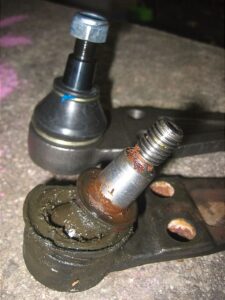
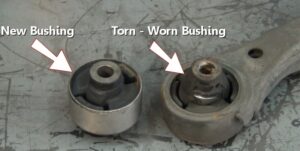
After a control arm is replaced, in most cases, the wheel alignment needs to be performed to bring the steering and suspension angles back to within the specifications. It is not necessary to replace both lower and upper control arms if one is bad, but often they wear out at roughly the same mileage. If one control arm is bad and the other is on its way, it makes sense to replace both arms at once. This way, you only need to do the wheel alignment once.
